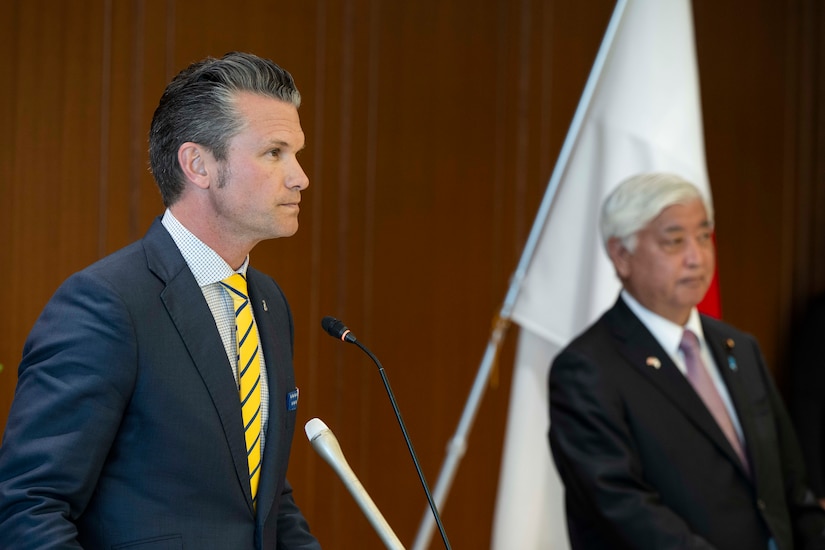
Reviews and recommendations are unbiased and products are independently selected. Postmedia may earn an affiliate commission from purchases made through links on this page.
Article content
Many artists hope to create work that prompts conversation. The creators of the hit TV show “Adolescence,” about a boy who fatally stabs his female classmate, actually have.
Advertisement 2
Article content
Article content
Article content
The four-episode British drama debuted on Netflix this month with little fanfare and no big Hollywood names attached (save for its Brad Pitt-led production company, Plan B).
The show, which follows Jamie Miller and his family in the aftermath of a shocking murder, has since had the largest two-week opening of any Netflix limited series and sparked discussions from India to the United States about how we raise boys in an era of social media and misogynist messaging.
In the U.K., where it became the first streaming show to top the country’s TV ratings, it has set off public debate on news panels and in Parliament, including whether the country should ban social media for those under age 16. Accused rapist and “manosphere” influencer Andrew Tate, who is briefly mentioned in the show, called it “unjust.” Even Prime Minister Keir Starmer jumped into the fray, saying he watched the show with his teenage children.
Advertisement 3
Article content
“Adolescence” has also been a critical success. Each of its episodes is shot in one take, creating a distinct and at times claustrophobic atmosphere that allows viewers to connect more intimately with its characters. The performances have been universally praised, particularly those of its two lead actors, newcomer Owen Cooper, who plays Jamie Miller, and Stephen Graham, who plays Jamie’s dad, Eddie Miller. Graham, the show’s co-creator, said he was inspired by classic British social dramas, and “Adolescence” employs the kind of gritty and gripping portrayals that have defined the genre.
But it’s the show’s subject matter and approach that have had the most profound and far-reaching impact on audiences. “Adolescence” homes in on topical themes of male isolation, vulnerability and violence without lecturing its audience or being overly prescriptive, leaving viewers with more questions than answers.
Article content
Advertisement 4
Article content
Is social-media-fueled bullying to blame? Misogynist influencers? What about fathers and their shifting roles in the household?
There may be a downside to generating so much conversation – the show itself can sometimes get lost.
At least, that’s what co-creator and writer Jack Thorne worries may be happening.
“You end up going, ‘Adolescence’ (is) the incel show. And that’s the last thing that I want to happen,” Thorne told The Washington Post on Monday. He bristles at the idea that the show could be reduced to a single issue or takeaway.
“You know the phrase, ‘It takes a village to raise a child’? The thing we were trying to do with this show is, ‘It takes a village to destroy a child,’” Thorne said. (Warning: Light spoilers ahead.)
Advertisement 5
Article content
Thorne was approached to write the series by Graham, who came up with the premise after Plan B approached him and director Philip Barantini about doing a TV series composed of one-take episodes, inspired by Graham and Barantini’s 2021 film “Boiling Point.”
At the time, Graham had been struck by news stories of knife attacks carried out by kids in the U.K., and he proposed using the show to cover the topic. Graham tapped Thorne, whose work includes the British teen drama “Skins” and the play “Harry Potter and the Cursed Child,” to write the series (which Graham also co-wrote).
Thorne said Graham gave him two rules: He had to design the story so it could be told in one continuous shot – and he couldn’t “blame the parents.” Viewers shouldn’t be able to explain the central character’s actions away by, say, an alcoholic or abusive parent.
Advertisement 6
Article content
Thorne said he initially struggled with the task until his close collaborator, Marina Johnson, suggested he look into “incel culture.” (“Incel” is shorthand for “involuntarily celibate.”) That led him through the labyrinths of Reddit and 4chan, teen vlogs and TikToks.
“The thing that was most frightening was that I understood the attraction,” Thorne said.
He could see how a younger, more insecure version of himself would find logic in the idea that “80 percent of women are attracted to 20 percent of men” – a “rule” that is mentioned in the series. How one might use this idea of women’s dominance to explain his isolation and loneliness; how he might conclude that the only solution was to be as attractive or as manipulative as he could be to get the better of them.
Advertisement 7
Article content
Even though the public conversation about “Adolescence” has centred around the more notorious personalities of the “manosphere,” namely self-proclaimed misogynist influencer Tate, Thorne said he drew from smaller, more hidden influences when piecing together Jamie’s worldview.
Not Tate, but all the people regurgitating and remixing his ideas. Not the video that has 3 million hits, but the one that has 2,000. Not “the top of the waterfall,” as Thorne put it, “but the middle and bottom.”
“I think the stuff Jamie is consuming is people we’ll never hear of, who were talking about ‘Gremlins’ or ‘Call of Duty,’ and then this stuff,” Thorne said.
The show has been especially wrenching for those raising kids, who feel like it captures their fears and anxieties of trying to keep up with the world their children are living in. “Adolescence,” one parent said, felt “like a wake-up call.”
Advertisement 8
Article content
Jeanne Marklin, 74, recently watched “Adolescence” alongside her husband. A former social worker, she recalled that when her son was a teen, her biggest worry was that he might get someone pregnant.
She’s now the grandparent of three teenagers, including two boys. After the show, she and her husband talked about how difficult that period of life is – “and that we’re so glad we’re not raising our kids in this atmosphere of social media.”
Thorne himself has taken on an advocacy role since the show’s debut – he recently backed a pledge for parents to withhold smartphones from their kids until they are at least 14 (Thorne has an 8-year-old son).
Parents who spoke to The Post about the show described feeling ill-equipped to handle today’s parenting challenges, whether that’s navigating consent or trying to control their kids’ online lives.
Advertisement 9
Article content
“Anyone else got the fear after watching Adolescence?” one user asked on a parenting subreddit. “I feel like pandoras box is opened and I have absolutely no control over it.”
That fraught self-examination – and self-judgment – is rendered powerfully in the show’s final episode, where Jamie’s parents grapple with blame: “We made him,” they say – the words brimming with all that’s unsayable.
“It would be good if we accepted that maybe we should’ve done (better),” mother Manda Miller (Christine Tremarco) tells Eddie. “Maybe it would be OK for us to think that.”
Responses to the show haven’t all been so considered or self-reflective – either missing the show’s point or reinforcing the dangers the show implicitly warns against. Across social media, debates have spiraled out over whether Jamie’s parents – or even his victim – are actually to blame for his crime. (Some discussions, seemingly primed by true crime whodunits, pondered whether there was some final twist – did Jamie even kill anyone?)
Advertisement 10
Article content
Thorne found himself the target of online trolls, who shared images of him and questioned if he had “too much estrogen.” (He called the reaction “a curiosity.”)
A more grounded criticism of “Adolescence” is how the show relates to its female characters, especially Katie, the girl who Jamie kills.
Thorne said the filmmakers “thought a lot about the character” and whether they should have told more of her story. (“Maybe we should have,” Thorne said, though he worries that doing so would have made the story “small, not bigger.”)
One of the show’s aims, Thorne said, was to examine “the male condition.” “Adolescence” does this by laying bare the vulnerabilities, failings and cruelties of its male characters, especially those of Jamie, Eddie and the lead detective, Luke Bascombe (played by Ashley Walters). The girls and women of the show have considerably less screen time.
Advertisement 11
Article content
Still, the female characters in “Adolescence” have struck a chord with many viewers. Some pointed out how the issues of rage and isolation aren’t restricted to the male characters.
Laura Hajek, an early childhood educator in Brooklyn empathized deeply with Katie’s best friend, Jade (Fatima Bojang). In the show, Jade is consumed with anger and grief over her friend’s death – and has few places to turn.
“Everybody across the board is having trouble expressing their vulnerability and having the ability to communicate that in a healthy way,” Hajek said.
This is part of the show’s power – and intent, Thorne said.
“It is a little bit about incels. It is a little bit about parenting,” he said. “It’s a little bit about all these things, but it’s really characters … trying to get an understanding of violence.”
Article content

















Discussion about this post